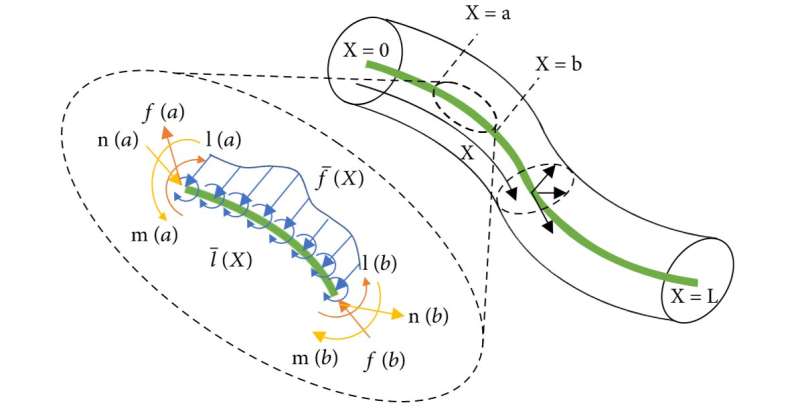Review paper: Tiny biohybrid robots for intelligent drug delivery

A review paper by scientists at Zhejiang University summarized the development of continuum robots from the aspects of design, actuation, modeling and control. The new review paper, published on Jul. 26 in the journal Cyborg and Bionic Systems, provided an overview of the classic and advanced technologies of continuum robots, along with some prospects urgently to be solved.
"Some small-scale continuum robots with new actuation methods are being widely investigated in the field of interventional surgical treatment or endoscopy, however, the characterization of mechanical properties of them is still different problem," explained study author Haojian Lu , a professor at the Zhejiang University.
In order to realize the miniaturization of continuum robots, many cutting-edge materials have been developed and used to realize the actuation of robots, showing unique advantages. The continuum robots embedded with micromagnet or made of ferromagnetic composite material have accurate steering ability under an external controllable magnetic field; Magnetically soft continuum robots, on the other hand, can achieve small diameters, up to the micron scale, which ensures their ability to conduct targeted therapy in bronchi or in cerebral vessels.
However, it is difficult for magnetically soft continuum robots to maintain stability under external forces, and the tiny rigid magnet tips risk falling off inside the body during operation. To achieve safer and more reliable control, shape memory materials are used to drive the continuum robot and for cardiovascular examination and nasopharyngeal administration. The key advantage of this self-deforming material is that it provides extension, bending, and torsion for the main stem and can achieve overall actuation while maintaining a small scale, but its inherent hysteresis makes it difficult to achieve rapid response and precise positioning at the same time, and it has a low load capacity and quite complex pipeline wiring.
Considering the nonlinear deformations caused by actuation, material elasticity, and sensitivity to contact with the environment, continuum robots face great challenges in precise analytical modeling.
One of the major challenges in modeling is to simplify the models and compromise the relationship between computation complexity and model accuracy.
Similarly, the control problem is also a great challenge for the continuum robot. The challenge is to find the proper actuation value to reach the desired state to perform a given task. Model-based control is highly dependent on the precise modeling of the continuum robot and the perception accuracy of the sensors. In addition, remote operation is often used to control the continuum robot in the medical field.
"The research field of continuum robots has made great progress, but there are still some problems to be solved including the miniaturization, more powerful perception and the stable simulation engine," said Lu.
More information: Jingyu Zhang et al, A Survey on Design, Actuation, Modeling, and Control of Continuum Robot, Cyborg and Bionic Systems (2022). DOI: 10.34133/2022/9783517
Provided by Beijing Institute of Technology Press





















